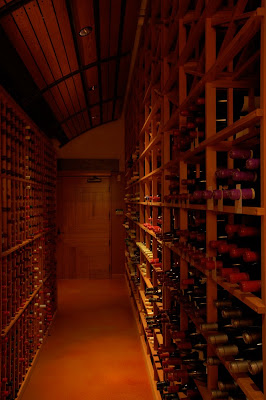In 2002, the Wine Research Centre in the Faculty of Land and Food Systems of the University of British Columbia officially opened a British Columbia chapter of the Canadian Wine Library. This beautiful B.C.
Wine Library and Vinothèque already has about 8,000 bottles of wine and is capable of housing up to 22,000. As the Centre's website explains, an advisory board of winery proprietors and academics in British Columbia suggest which young wines should be obtained for study. These are then procured, often in units of two cases (24 bottles). The bottles can then be analyzed by the Centre's very active laboratories and carefully tasted annually over the next 24 years. Among the Centre's many goals is that of determining which varietals are best suited for which of the province's many micro climates and terroires.
My thanks to Associate Dean, Dr. Hennie van Vuuren, Eagles Chair in Food Biotechnology and founder and Director of the Wine Research Centre, for allowing me to photograph in the nicely-chilled Library. I will never again leave home without a corkscrew.

































